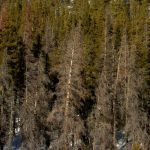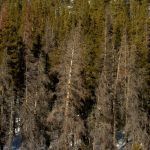Dominique Luchart's Blog, page 734
October 28, 2020
Listen live at 4 pm ET: NASA, SpaceX to discuss Crew-1 astronaut launch plans, ,

NASA and SpaceX will hold a press conference today (Oct. 28) to discuss the upcoming Crew-1 astronaut launch and you can follow it live here at 4 p.m. EDT. Listen live.
The post Listen live at 4 pm ET: NASA, SpaceX to discuss Crew-1 astronaut launch plans, , appeared first on NEWDAWN Blog.
October 27, 2020
Sony boosts PlayStation profits despite looming PS5 launch, Sam Byford

 Photo by Vjeran Pavic / The Verge
Photo by Vjeran Pavic / The Verge
Sony’s gaming division is continuing to drive major profits for the company even as the PlayStation 4 era winds down. The company announced PlayStation-related revenue of 507 billion yen (~$4.9 billion) and an operating profit of 105 billion yen (~$1 billion) for its July-September quarter, respective improvements of 52 and 40 percent on the same period a year ago.
With the PlayStation 5 set to launch in a couple of weeks, normally you’d expect a significant negative impact on Sony’s books for the previous quarter as the company ramps up manufacturing before it starts to bring in more revenue. Sony does say that its profits were hit by an increase in costs, while revenue was reduced by a predictable decrease in PS4 sales. Higher game…
The post Sony boosts PlayStation profits despite looming PS5 launch, Sam Byford appeared first on NEWDAWN Blog.
Anker’s custom wireless charger for the unannounced second-gen Amazon Echo Buds leaks in full, Jay Peters

 A render of the unannounced Anker charging pad. | Image: GizmoChina
A render of the unannounced Anker charging pad. | Image: GizmoChina
Just yesterday, we found FCC filings for a new Anker PowerWave wireless charging pad that mentioned an unannounced second generation of Echo Buds with wireless charging right in the name. That charger has since leaked in full in a Wireless Power Consortium (WPC) listing spotted by GizmoChina.
The now-pulled WPC listing included the render of the product at the top of this post that gives us a few hints about what the Echo Buds’ case might look like and some of the features of the pad. The charger appears to have an oblong indentation for the Echo Buds’ wireless charging case to rest in, indicating the case will have a much different shape than more rectangular one used with the original Echo Buds. (We observed a similar oblong shape in a…
The post Anker’s custom wireless charger for the unannounced second-gen Amazon Echo Buds leaks in full, Jay Peters appeared first on NEWDAWN Blog.
Anker’s custom wireless charger for the unannounced second-gen Amazon Echo Buds leaks in full,

Just yesterday, we found FCC filings for a new Anker PowerWave wireless charging pad that mentioned an unannounced second generation of Echo Buds with wireless charging right in the name. That charger has since leaked in full in a Wireless Power Consortium (WPC) listing spotted by GizmoChina.
The now-pulled WPC listing included the render of the product at the top of this post that gives us a few hints about what the Echo Buds’ case might look like and some of the features of the pad. The charger appears to have an oblong indentation for the Echo Buds’ wireless charging case to rest in, indicating the case will have a much different shape than more rectangular one used with the original Echo Buds. (We observed a similar oblong shape in a diagram of the pad included with the FCC filings.)
The charger also looks to have different charging indicators for the case and the earbuds, which could be a handy way to know at a glance if your Echo Buds are fully charged but the case isn’t, for example. There’s also a charging light labelled “Phone,” which will presumably light up when you place a phone on the pad.
It’s unclear when this charging pad might come out, but the fact that it appeared both on the WPC and in FCC filings hints that it could be released soon. And if this charging pad for a new set of Echo Buds is seemingly on the way, that suggests the headphones themselves could be announced imminently as well.
The post Anker’s custom wireless charger for the unannounced second-gen Amazon Echo Buds leaks in full, appeared first on NEWDAWN Blog.
Microsoft Internet Explorer users may be surprised when they get redirected to Edge next month, Sean Hollister


Microsoft has been slowly weaning users off its legacy Internet Explorer browser for a very long time, recently going so far as to use a forced Windows update to install its new Chromium Edge browser on your Windows PC. But next month, Microsoft’s planning to force your computer to automatically launch some 1,156 websites in Edge, too — if you try to launch an “incompatible” site in IE.
That’s the report from ZDNet, which also recorded a video showing how it works:
There’s a lot of big-name sites on the automatically-launch-in-Edge list, including Facebook, Instagram, Twitter, YouTube, a number of Google products, Microsoft Teams, and quite a few banks and other big brands.
According to a Microsoft FAQ, the change will roll out in…
The post Microsoft Internet Explorer users may be surprised when they get redirected to Edge next month, Sean Hollister appeared first on NEWDAWN Blog.
Microsoft Internet Explorer users may be surprised when they get redirected to Edge next month,

Microsoft has been slowly weaning users off its legacy Internet Explorer browser for a very long time, recently going so far as to use a forced Windows update to install its new Chromium Edge browser on your Windows PC. But next month, Microsoft’s planning to force your computer to automatically launch some 1,156 websites in Edge, too — if you try to launch an “incompatible” site in IE.
That’s the report from ZDNet, which also recorded a video showing how it works:
There’s a lot of big-name sites on the automatically-launch-in-Edge list, including Facebook, Instagram, Twitter, YouTube, a number of Google products, Microsoft Teams, and quite a few banks and other big brands.
According to a Microsoft FAQ, the change will roll out in Microsoft Edge version 87, which is set to arrive the week of November 19th, and that Edge will automatically try to migrate your browsing data from IE unless you uncheck a box (see the image below).

Given that older versions of Internet Explorer have been the bane of web developers for a very long time, and given that even generous estimates suggest Internet Explorer counts for no more than 5 percent of today’s web traffic, this isn’t a particularly frustrating move. I personally haven’t touched IE in years, and I’m happy to hear it might become less of a security risk.
But I also understand that some people still use the browser, and those people might be confused when their computer suddenly launches Edge instead. This post is for them.
The post Microsoft Internet Explorer users may be surprised when they get redirected to Edge next month, appeared first on NEWDAWN Blog.
Wildfires tear through Colorado’s beetle-bitten forests, Justine Calma

 The red needles on the pine trees are dead lodgepole pines that have been killed by the pine beetle infestation. These trees were found near Rollinsville near the Peak to Peak highway. Federal and state forestry officials say that at current rates, mountain pine beetles will kill the majority of Colorado’s large-diameter lodgepole pine forests within three to five years. | Photo By Helen H. Richardson/The Denver Post via Getty Images
The red needles on the pine trees are dead lodgepole pines that have been killed by the pine beetle infestation. These trees were found near Rollinsville near the Peak to Peak highway. Federal and state forestry officials say that at current rates, mountain pine beetles will kill the majority of Colorado’s large-diameter lodgepole pine forests within three to five years. | Photo By Helen H. Richardson/The Denver Post via Getty Images
Record-setting wildfires in Colorado are wreaking havoc on forests that have already been devastated by outbreaks of another kind: infestations of beetles that burrow beneath tree bark and eventually kill their hosts.
State officials last week mentioned that the East Troublesome Fire was burning through an abundance of “beetle-killed” pine trees, boosted by dangerous weather conditions. That fire grew to become the second largest fire in Colorado’s history and was only 20 percent contained as of Tuesday. Three of the largest wildfires on record in the state have burned this year, and they’ve preyed on forests hard-hit by beetle infestations.
Our Granby Field Office staff snapped these pics of the #EastTroublesomeFire in Grand County….
The post Wildfires tear through Colorado’s beetle-bitten forests, Justine Calma appeared first on NEWDAWN Blog.
Wildfires tear through Colorado’s beetle-bitten forests,

Record-setting wildfires in Colorado are wreaking havoc on forests that have already been devastated by outbreaks of another kind: infestations of beetles that burrow beneath tree bark and eventually kill their hosts.
State officials last week mentioned that the East Troublesome Fire was burning through an abundance of “beetle-killed” pine trees, boosted by dangerous weather conditions. That fire grew to become the second largest fire in Colorado’s history and was only 20 percent contained as of Tuesday. Three of the largest wildfires on record in the state have burned this year, and they’ve preyed on forests hard-hit by beetle infestations.
Our Granby Field Office staff snapped these pics of the #EastTroublesomeFire in Grand County. It’s burning in heavy down, dead, beetle-killed lodgepole pine – a result of the forest fuel situation there coupled with high winds & drought. Fire info: https://t.co/lOwSoGLRtm pic.twitter.com/hZnXvqHVNj
— Colorado Forest Service (@CSFS_Outreach)
But researchers warn against blaming the beetles for the unprecedented fire season Colorado is having. There’s growing evidence that beetles play a negligible role in the spread and severity of fires. Our changing climate is likely a bigger culprit behind the destruction of Colorado’s forests. Hotter, drier conditions are fueling wildfires and bark beetle infestations. If the planet continues to heat up unchecked, both problems are expected to get worse.
“Recent [beetle] outbreaks can distract us from the big picture, which is that we should get used to living with fires,” says Dominik Kulakowski, a professor at Clark University who has studied the effects of bark beetles on wildfire behavior. “Large fires are going to keep occurring, and the exact condition of the forest is going to matter less [the more extreme weather and climatic conditions are].”
It’s easy to see why the beetle has become a sort of boogeyman in Colorado and other Western states. Beetles burrow beneath tree bark to lay their larvae, slowly killing the tree as they chew tunnels through it. Winter used to keep beetle populations in check, but milder temperatures have allowed their numbers to boom for decades. “It takes a native insect and makes it behave as if it were invasive,” Mike Lester, the Colorado state forester says.
A drought in Colorado from 2001 to 2002 made things worse in the lodgepole pine forests that the East Troublesome Fire is burning through now. Healthy trees can typically make enough sticky resin to deter the invaders, but trees stressed by drought have a harder time doing this, leaving swaths of weak trees for the beetles to prey on.
In Colorado and other Western states, bark beetles have left behind millions of acres of forest scarred with dead trees. That’s led to concern that all those dead trees make the perfect fuel for megafires. But the relationship between beetles, trees, and fires gets pretty complex.
Lester recalls a joke from a friend: “Forestry isn’t rocket science,” he says. “It’s much more complicated.”
Research over the last five years has made it more clear that crown fires — which race from treetop to treetop — don’t spread as easily between trees that have lost their needles. When beetles attack, they dry out the trees’ needles, turning them red, and eventually causing them to fall. There still isn’t scientific consensus on whether the dried up needles pose a greater fire risk while they’re still attached to the trees. But most experts agree that canopy fires, like the East Troublesome Fire, have a harder time jumping around among trees that have already lost their foliage.
When needles do fall, they become fuel along the forest floor and could ignite into a surface fire. Surface fires tend to be less devastating and easier to control, according to Kulakowski, compared to crown fires. But even if beetle infestations aren’t leading to more intense blazes, they’re still changing the dynamics of wildfires.
As the beetles’ damage redistributes fuel throughout the forest, wildfire behavior in Colorado and other beetle-ridden states is becoming harder to predict. That unpredictability can ultimately make wildfires more challenging to fight. Firefighters might need to deal with more downed trees in stretches of wood that beetles have decimated. And they’ll be forced to switch up strategies based on whether they’re dealing with surface or crown fires.
There is one prediction that experts are already making: whether or not the beetles are making the forest more vulnerable to fires, the fires will make the forest even more vulnerable to bark beetles. “Bark beetles love trees that are moderately scorched or that are weakened by these fire events,” says Colorado State Forest Service entomologist Dan West. Making matters worse, Colorado is also in another drought, and temperatures globally are still rising. Once the blazes die down, the trees that survived will need to prepare to fight old foes: beetles and a warming world.
The post Wildfires tear through Colorado’s beetle-bitten forests, appeared first on NEWDAWN Blog.
Microsoft Teams usage jumps 50 percent to 115 million daily active users, Tom Warren


Microsoft saw some big growth in Microsoft Teams at the beginning of the pandemic, and it has kept accelerating over the past six months. During an earnings call with investors today, Microsoft CEO Satya Nadella reveled Microsoft Teams now has 115 million daily active users. That’s a more than 50 percent rise from the 75 million that Microsoft reported almost six months ago.
It’s difficult to compare Microsoft’s numbers to its rivals, though. Both Zoom and Google report daily active participants, which means a single user could be counted multiple times through different meetings during a day. Google revealed it has 100 million daily active participants earlier this year, and Zoom said it had 300 million daily active participants. Slack…
The post Microsoft Teams usage jumps 50 percent to 115 million daily active users, Tom Warren appeared first on NEWDAWN Blog.
Microsoft Teams usage jumps 50 percent to 115 million daily active users,

Microsoft saw some big growth in Microsoft Teams at the beginning of the pandemic, and it has kept accelerating over the past six months. During an earnings call with investors today, Microsoft CEO Satya Nadella reveled Microsoft Teams now has 115 million daily active users. That’s a more than 50 percent rise from the 75 million that Microsoft reported almost six months ago.
It’s difficult to compare Microsoft’s numbers to its rivals, though. Both Zoom and Google report daily active participants, which means a single user could be counted multiple times through different meetings during a day. Google revealed it has 100 million daily active participants earlier this year, and Zoom said it had 300 million daily active participants. Slack also saw some growth earlier this year.
Microsoft has been steadily improving Teams throughout the pandemic. A new Together Mode was designed specifically for pandemic-era meetings, allowing participants to sit virtually next to each other. The NBA used the Teams feature for basketball games over the summer.
Microsoft has also opened Teams’ doors to third-party apps, made the service available to consumers, and promised features like breakout rooms by the end of the year. Nadella also revealed today that LinkedIn now has 722 million users. LinkedIn has been gradually growing and adding to Microsoft’s revenues since the company acquired the social network for $26 billion back in 2016.
The post Microsoft Teams usage jumps 50 percent to 115 million daily active users, appeared first on NEWDAWN Blog.



